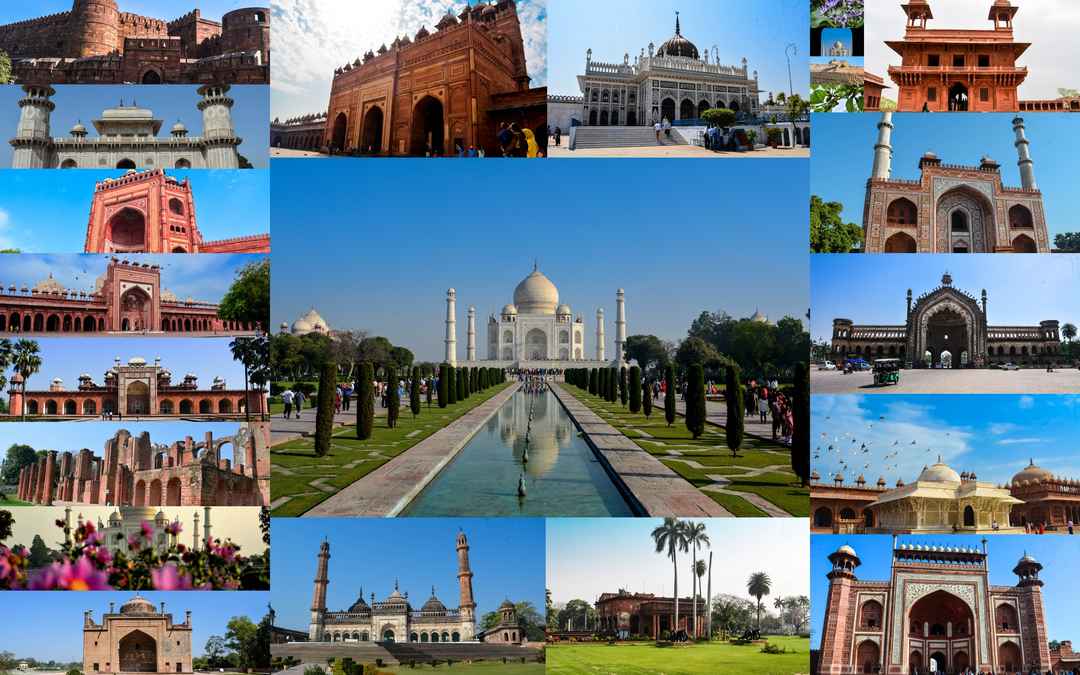Periyar’s Self-Respect Movement: A Legacy of Social Transformation
Inspired by the centenary article “Keep the Fire of the Self-Respect Movement Going” (The Hindu, September 28, 2024) by Manuraj Shunmugasundaram and Vignesh Karthik K.R., this analysis spotlights E.V. Ramasamy, known as Periyar, whose leadership of the Self-Respect Movement profoundly transformed Indian society by challenging caste discrimination, advocating for gender equality, and promoting rationalism to create a more inclusive and progressive society.
Introduction
E.V. Ramasamy, popularly known as Periyar, remains one of India’s most influential social reformers. Born in 1879 in Tamil Nadu, he spent his life confronting the injustices embedded in the caste system, gender inequality, and religious superstition. Periyar founded the Self-Respect Movement, a force that profoundly reshaped Tamil society, promoting ideals of equality, justice, and rational thought. This essay explores Periyar’s life, the foundational ideas of the Self-Respect Movement, its fight against caste and gender discrimination, and its lasting influence on modern society.
Early Life of Periyar
Periyar’s early experiences heavily influenced his later activism. Raised in a wealthy family in Tamil Nadu, he witnessed the pervasive injustice faced by lower-caste people, which deeply troubled him. Though he had limited formal education, Periyar’s keen intellect and independent thinking were apparent. His early disillusionment with religious orthodoxy and the oppressive caste system became the cornerstone of his life’s work.
Initially active in the Indian National Congress, Periyar grew frustrated by the Congress’s focus on political freedom while neglecting social reform, particularly caste-based inequalities. Recognising that true freedom would remain unattainable without eliminating these injustices, Periyar broke away from the Congress to pursue a more focused mission of social reform.
Birth of the Self-Respect Movement
In 1925, Periyar founded the Self-Respect Movement. At its core, the movement sought to instil dignity and self-respect in the marginalised, particularly those from lower castes. The movement encouraged oppressed individuals to reject the discriminatory practices that had long subjugated them and called for widespread social reform that challenged the caste system and gender inequality. Periyar believed that personal dignity was the key to achieving true freedom and equality.
The Self-Respect Movement also emphasised rationalism, rejecting traditional religious dogma and superstition that justified social hierarchies. Through this, Periyar promoted a society where people made decisions based on reason, not faith, and where equality for all was paramount.
Challenging the Caste System
The caste system in India, one of the oldest and most rigid social hierarchies in the world, determined every aspect of life—from occupation to social interactions—oppressing millions, especially those at the lower rungs. Periyar argued that the caste system was a tool for maintaining upper-caste dominance, particularly by the Brahmins. He saw religion as central to sustaining caste divisions, and he openly criticised religious texts, including the Manusmriti, which he publicly burned to symbolise his rejection of caste-based discrimination.
Periyar’s efforts were not just symbolic; he also pushed for practical changes, such as promoting inter-caste marriages and encouraging people to reject caste-based practices like endogamy. He believed that the abolition of caste names and barriers in education and employment were essential steps towards an equal society.
Promoting Gender Equality and Women’s Rights
A key component of the Self-Respect Movement was its advocacy for women’s rights. In the early 20th century, women in India were largely denied education, married off at young ages, and expected to remain subservient to male authority. Periyar saw the oppression of women as intrinsically linked to the caste system and believed that true social reform required gender equality.
In addition to fighting caste-based discrimination, the Self-Respect Movement also focused on improving the status of women in society. At the time, women in India were subjected to a variety of social injustices. They were often denied education, married off at a young age, and expected to live under the control of their husbands or fathers. Periyar believed that the oppression of women was closely tied to the oppression of lower castes, and he sought to address both issues through his movement.
Periyar argued that true social reform could not be achieved without gender equality. He believed that women should have the same rights as men, including the right to education, the right to work, and the right to make decisions about their own lives. He was particularly critical of the practice of child marriage, which was common in many parts of India at the time. Periyar argued that child marriage denied girls the opportunity to get an education and live independent lives.
One of the most radical ideas promoted by the Self-Respect Movement was the concept of “Self-Respect Marriages.” In traditional Hindu society, marriages were often arranged by the family, and they were filled with religious rituals that reinforced caste divisions. Periyar proposed that marriages should be based on mutual respect between the partners, rather than caste or religious considerations. He encouraged people to conduct their marriages without the involvement of priests or religious rituals, which he believed perpetuated inequality.
The Self-Respect Marriages were a direct challenge to the status quo, and they quickly gained popularity, particularly among lower-caste individuals who wanted to break free from the constraints of the caste system. These marriages were seen as a symbol of equality, as they were not based on caste or religious rituals, but on mutual love and respect.
Role of Women in the Self-Respect Movement
Women played a crucial role in the Self-Respect Movement, both as leaders and participants. Periyar’s wife, Nagammai, was one of the earliest supporters of the movement and worked alongside him to promote gender equality. Many women were actively involved in spreading the message of the Self-Respect Movement, organising meetings, giving speeches, and advocating for social reform.
The Movement’s radical stance on women’s rights resonated with many, especially its calls for equal education, employment opportunities, and marital rights. By advocating for women’s empowerment, the Self-Respect Movement laid the foundation for future social and legal reforms that benefited women throughout Tamil Nadu.
Rationalism and the Fight Against Superstition
Rationalism was one of the central pillars of Periyar’s philosophy. He argued that many social injustices, including the caste system and gender inequality, were sustained by irrational beliefs rooted in religious tradition. Periyar promoted a worldview based on logic, reason, and evidence, calling for the rejection of superstition and religious dogma.
An atheist himself, Periyar criticised organised religion for perpetuating ignorance and oppression, particularly against lower castes and women. He encouraged individuals to question the authority of religious leaders and scriptures that justified social inequality. By promoting rational thought, Periyar hoped to create a society where individuals could think critically and challenge the structures that oppressed them.
Education as a Tool for Social Change
Periyar believed that education was one of the most powerful tools for social change. He argued that without education, people would remain trapped in ignorance and unable to challenge the injustices that surrounded them. Education, according to Periyar, was the key to empowering individuals to think critically about the world and to fight against oppression.
Periyar’s focus on education was not limited to the traditional academic subjects. He believed that education should also teach people to question social norms, challenge authority, and think for themselves. He encouraged people to learn about their rights and to use that knowledge to fight for a more just and equal society. This emphasis on critical thinking and social awareness was a central part of the Self-Respect Movement’s educational philosophy.
Periyar also recognised the importance of education for women. He believed that if women were educated, they would be better equipped to fight against the social and cultural practices that oppressed them. He worked to ensure that women had access to education and encouraged them to pursue careers outside of the traditional roles of wife and mother. By educating women, Periyar hoped to create a new generation of individuals who would be capable of challenging the deeply ingrained gender and caste inequalities in Indian society.
The Movement’s Political and Social Legacy
While the Self-Respect Movement focused on social reform, its impact on Tamil Nadu’s political landscape was profound. It laid the foundation for the rise of Dravidian political parties such as the Dravida Munnetra Kazhagam (DMK), which emphasised Tamil identity and regional autonomy over religious and caste-based identities.
These parties have continued to promote Periyar’s ideals of social justice, equality, and rationalism. Over the years, the movement’s influence has extended to various social policies, including reservations for lower castes in education and employment, which aimed to correct the historical injustices faced by marginalised communities.
The movement also contributed to the Tamil Renaissance, which sought to celebrate Tamil culture and language, challenging the dominance of Sanskrit and North Indian cultural hegemony.
Opposition to the Self-Respect Movement
Despite its success, the Self-Respect Movement faced significant opposition, particularly from religious and upper-caste communities who viewed Periyar’s ideas as a threat to their social standing. His staunch atheism and rejection of Hindu religious practices alienated many in a deeply religious society.
Nevertheless, Periyar remained committed to his cause, believing that dismantling the caste system and promoting equality was more important than personal popularity. His determination inspired many to join the movement, particularly those from lower castes and women who had long been denied their rights.
Continuing Challenges and the Future of the Self-Respect Movement
As the Self-Respect Movement enters its second century, it faces new challenges. Cultural homogenisation, led by right-wing ideologies such as Hindutva, threatens the movement’s principles by promoting a singular, dominant identity that undermines regional and caste-based diversity. Additionally, issues of intersectionality—where caste intersects with class, religion, gender, and sexuality—pose new challenges that the movement must address.
To remain relevant, the Self-Respect Movement must evolve to meet these modern challenges while staying true to its foundational principles of equality, rationalism, and social justice. Engaging younger generations, particularly in the digital age, will be crucial to resisting the spread of misinformation and maintaining the movement’s relevance in a rapidly changing world.
Conclusion
Periyar’s Self-Respect Movement was a transformative force in Indian society. By challenging caste discrimination, promoting gender equality, and advocating for rationalism, Periyar laid the groundwork for a more just and equal society. Though the movement faced significant opposition, its legacy endures, particularly in the political landscape of Tamil Nadu and the ongoing fight for social justice. As the movement enters its second century, its ideals remain as relevant as ever, reminding us that the fight for equality is ongoing and must be carried forward by each new generation.


